| Weight | 1 lbs |
|---|---|
| Dimensions | 9 × 5 × 2 in |
| host | mouse |
| isotype | IgG |
| clonality | monoclonal |
| concentration | concentrate, predilute |
| applications | IHC |
| reactivity | human |
| available size | 0.1 mL, 0.5 mL, 1 mL concentrated, 7 mL prediluted |
rabbit anti-PLAP monoclonal antibody (ZR441) 6338
Price range: $160.00 through $528.00
Antibody summary
- Rabbit monoclonal to PLAP
- Suitable for: Immunohistochemistry (formalin-fixed, paraffin-embedded tissues)
- Reacts with: Human
- Isotype:IgG
- Control: Placenta
- Visualization: Membrane
- 0.1, 0.5, 1.0 mL concentrated, 7 mL prediluted
rabbit anti-PLAP monoclonal antibody ZR441 6338
| target relevance |
|---|
| Protein names Alkaline phosphatase, placental type (EC 3.1.3.1) (Alkaline phosphatase Regan isozyme) (Placental alkaline phosphatase 1) (PLAP-1) |
| Gene names ALPP,ALPP PLAP |
| Protein family Alkaline phosphatase family |
| Mass 57954Da |
| Function FUNCTION: Alkaline phosphatase that can hydrolyze various phosphate compounds. {ECO:0000269|PubMed:1939159, ECO:0000269|PubMed:25775211}. |
| Catalytic activity CATALYTIC ACTIVITY: Reaction=a phosphate monoester + H2O = an alcohol + phosphate; Xref=Rhea:RHEA:15017, ChEBI:CHEBI:15377, ChEBI:CHEBI:30879, ChEBI:CHEBI:43474, ChEBI:CHEBI:67140; EC=3.1.3.1; Evidence={ECO:0000255|PROSITE-ProRule:PRU10042, ECO:0000269|PubMed:1939159, ECO:0000269|PubMed:25775211}; PhysiologicalDirection=left-to-right; Xref=Rhea:RHEA:15018; Evidence={ECO:0000269|PubMed:1939159, ECO:0000269|PubMed:25775211}; |
| Subellular location SUBCELLULAR LOCATION: Cell membrane; Lipid-anchor, GPI-anchor {ECO:0000269|PubMed:1730777, ECO:0000269|PubMed:2153284}. |
| Tissues TISSUE SPECIFICITY: Detected in placenta (at protein level). {ECO:0000269|PubMed:20693656}. |
| Structure SUBUNIT: Homodimer. {ECO:0000269|PubMed:11124260, ECO:0000269|PubMed:15946677, ECO:0000269|PubMed:16815919, ECO:0000269|PubMed:20693656}. |
| Target Relevance information above includes information from UniProt accession: P05187 |
| The UniProt Consortium |
Data
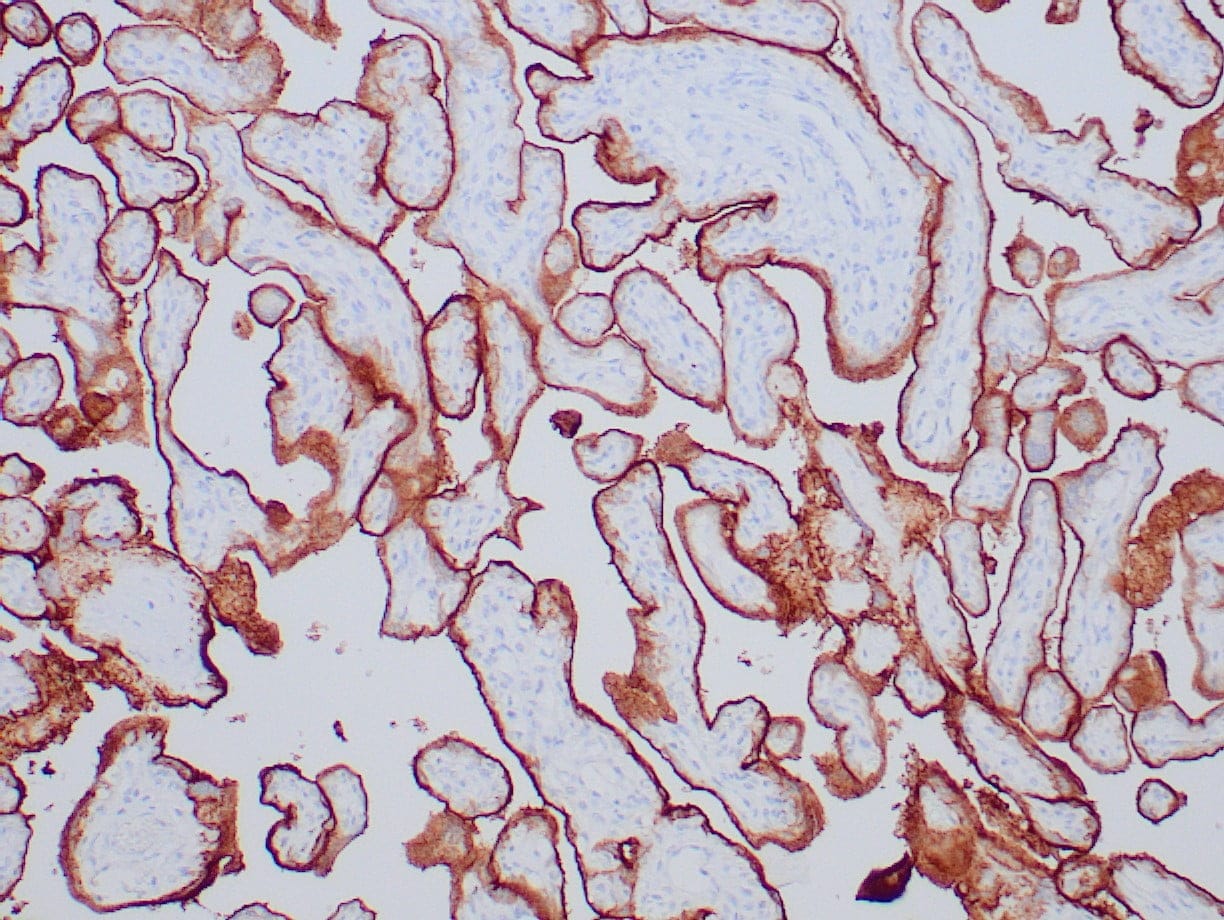 |
| Human placenta stained with anti-PLAP antibody using peroxidase-conjugate and DAB chromogen. Note the membrane staining of trophoblasts.. |
Publications
| pmid | title | authors | citation |
|---|---|---|---|
| We haven't added any publications to our database yet. | |||
Protocols
| relevant to this product |
|---|
| IHC |
Documents
| # | SDS | Certificate | |
|---|---|---|---|
| Please enter your product and batch number here to retrieve product datasheet, SDS, and QC information. | |||
Only logged in customers who have purchased this product may leave a review.
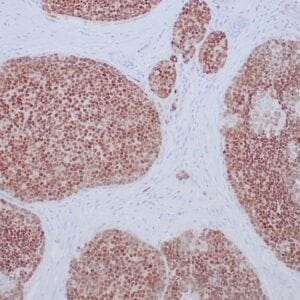
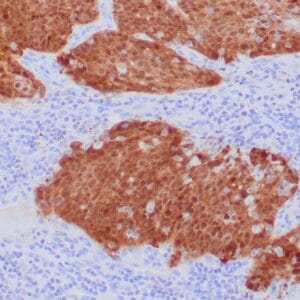
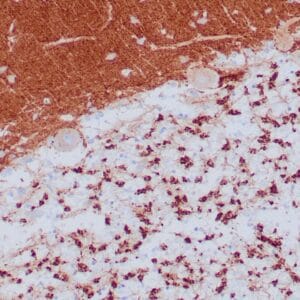
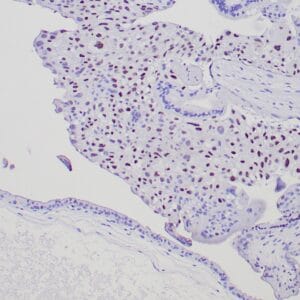
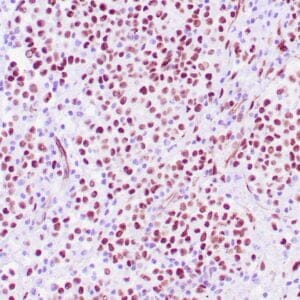
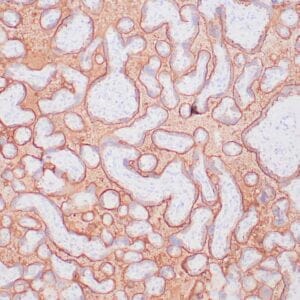

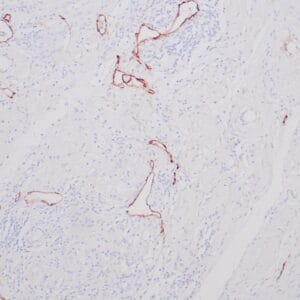
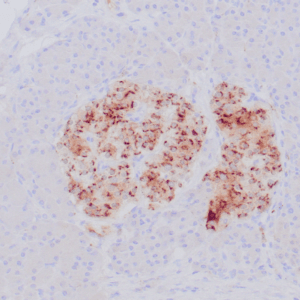
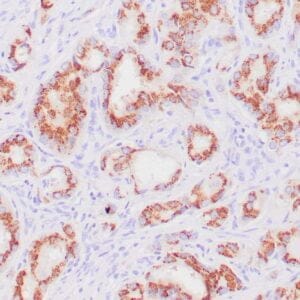
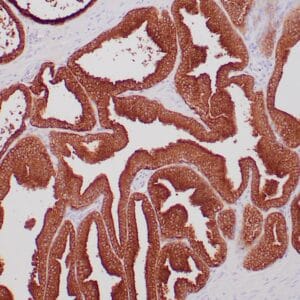

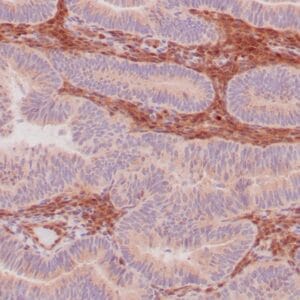

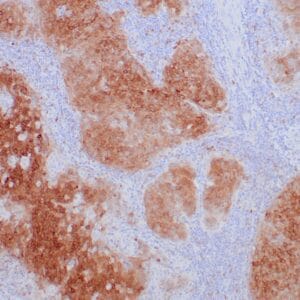
Reviews
There are no reviews yet.